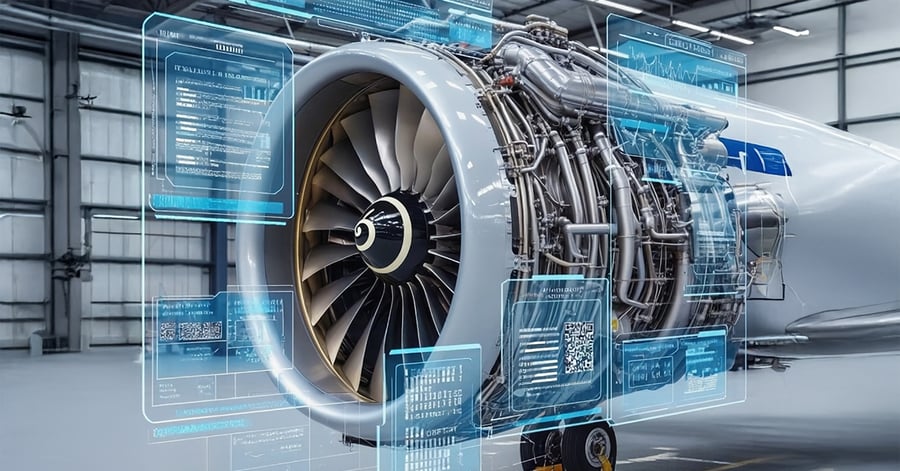
The Induction Paradox: Unpacking the 6-Month Wait for New-Gen Aircraft Engines
The Induction Paradox: Unpacking the 6-Month Wait for New-Gen Aircraft Engines
5:28
Published :

In the high-stakes world of aviation MRO, time is money - and lately, time is in short supply. Throughout 2024 and into 2025, industry observers like IBA have flagged a troubling trend: engine induction times for new-generation powerplants like the LEAP-1A and PW1100G have surged by up to 150%, with some engines waiting as long as six months before even entering the shop.
The first thought that occurred to me was—these are new-age engines, designed to be highly efficient, reliable, and predictable when it comes to maintenance planning. So how is it that they now take an exhaustive six months just for induction? It’s a paradox that demands closer scrutiny.
For airlines, lessors, and MROs alike, this isn’t just a scheduling inconvenience—it’s a strategic risk. Let’s unpack what’s driving this delay, and more importantly, how the industry can respond.
Engine induction- the point at which an engine physically enters the shop for maintenance—used to be a relatively predictable milestone. Today, it’s a moving target. Here’s why:
MROs are operating at full tilt. With a surge in shop visits driven by early-life performance issues and maturing fleets, hangars are booked months in advance. New-gen engines, which require specialized tooling and trained technicians, often get pushed down the queue.
Even where physical capacity exists, the shortage of certified technicians—especially those trained on newer platforms—limits throughput. Training pipelines haven’t kept pace with fleet expansion.
Some repairs are OEM-exclusive, creating bottlenecks at authorized facilities. This limits flexibility and adds to wait times, especially when OEMs themselves are capacity-constrained.
Airlines are being forced to retain older aircraft or lease spare engines just to maintain operational schedules. This not only drives up operating costs but also reduces fleet flexibility, making it harder to respond to demand fluctuations or optimize route planning.
For lessors, engines stuck in MRO queues delay lease transitions and impair asset utilization. The unpredictability of shop visit timelines also complicates residual value forecasting and lease structuring, especially for newer engine types.
MRO providers are caught in a balancing act—managing legacy engine workloads while grappling with the complexity of new-generation engines. The inability to meet promised turnaround times risks reputational damage and strains customer relationships.
OEMs are facing mounting pressure from all sides. On one hand, they’re dealing with production shortfalls and parts backlogs; on the other, they’re being held accountable for engine reliability and repair exclusivity. The bottlenecks at OEM-authorized shops are not only slowing down inductions but also impacting their ability to support fleet growth and maintain customer trust.
While macro factors like OEM output and global logistics are hard to control, MROs and operators can take proactive steps to reduce induction friction:
Predictive Slot Management: Using AI to forecast demand and dynamically allocate shop slots based on engine condition, parts availability, and technician schedules.
Integrated Parts Planning: Synchronizing procurement with induction schedules to ensure critical components are available before the engine arrives.
Workforce Augmentation: Investing in AR-guided workflows and cross-training to reduce dependency on niche skills and improve technician productivity.
Digital transformation is more than a buzzword—it’s a necessity. Purpose-built aviation MRO software like Ramco Aviation, Aerospace & Defense provides:
In short, aviation MRO software is no longer just a management tool—it’s a resilience lever that can help the industry tackle LEAP-1A engine induction delays, PW1100G MRO challenges, and persistent engine shop visit backlogs head-on.
The six-month induction delay is a symptom of deeper structural challenges in the aviation MRO ecosystem. But with the right mix of process innovation, digital enablement, and strategic foresight, the industry can turn this bottleneck into a breakthrough.
Because in aviation, delays are inevitable—but being unprepared is optional.
Enterprise asset management (EAM) involves the management of mission critical assets of an organization throughout each asset's lifecycle. EAM is used to plan, optimize, execute, and track the needed maintenance activities with the associated priorities, skills, materials, tools, and information. The aim is to optimize the quality and utilization of assets throughout their lifecycle, increase productive uptime and reduce operational costs.
Enterprise asset management (EAM) involves the management of the maintenance of physical assets of an organization throughout each asset's lifecycle. EAM is used to plan, optimize, execute, and track the needed maintenance activities with the associated priorities, skills, materials, tools, and information.
The software helps in effective maintenance of assets through preventive, predictive, shutdown and breakdown maintenance strategies. The system also helps enterprises mitigate equipment risks by enhanced safety standards. The streamlined operations and improved asset performance helps organizations increase their investment effectiveness.
EAM is important because it helps organizations track, assess, manage and optimize asset quality and reliability. Asset intensive Organizations have hundreds, thousands, even millions of assets which needs to be maintained to maximize / optimize life of these assets to increase the return on investment.
The key features of effective EAM are:
Asset Intensive companies under the following Industries :
Contact us for a meeting and schedule a demo
This differs on case to case basis, based on the type of installation and unique industry specific requirements. Contact us for a meeting and schedule a demo.
This differs on case to case basis, based on the type of installation and unique industry specific requirements. Contact us for a meeting and schedule a demo.
Stay Connected, follow us on LinkedIn / Twitter to know more about EAM Software latest trends.

Prakash Babu Devara is Head of Aviation Marketing at Ramco Systems, bringing over 15 years of experience in marketing and branding. With a passion for aviation and technology, he is dedicated to bringing the best of both worlds together to drive value proliferation. Prakash has a proven track record in developing and implementing effective marketing strategies, building strong brands, and driving business growth. In addition to his role at Ramco, he is an aviation blogger and a seasoned public speaker known for communicating complex ideas clearly and engagingly.

All Rights Reserved. © Copyright 2024. Ramco Systems.